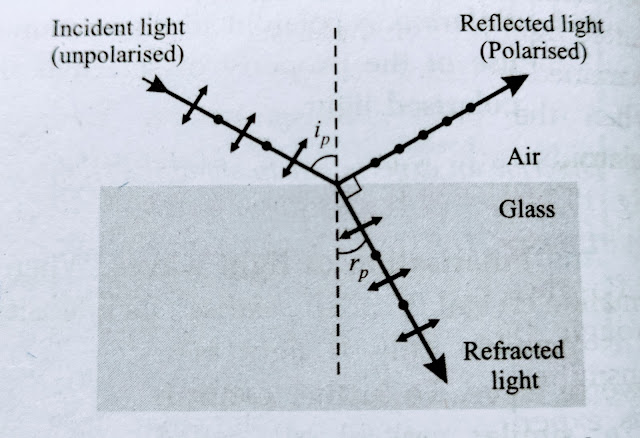Polarisation
Polarisation
The phenomenon of restricting the waves in oscillation to particular plane is called polarisation.
Note
A wave having oscillation in all possible direction is said to be polarised.
When the all oscillation get can fined along one direction the wave is called plane polarised.
Representation of Unpolarised and polarised
Pictorial representations of Unpolarised light
Plane polarised light: (a) vibrations parallel to the plane of paper. (b) vibrations perpendicular to the plane of paper.
Experimental demonstration of polarisation
Intensity depends upon the angle between polariser axis and analyser axis.
Law of molus
It States that the intensity of polarised light transmitted through the analyser varies as the square of cosine of the angle between the plane of transmission of analyser and polariser.
Or
Angle between optical axis of analyser and polariser.
I is directly proportional to cos(theta) × cos(theta)
Proof -
If 'a' be the amplitude of polarised light of polariser
Only "acos(theta)" passes through the axis of analyser
W.K.T
I is directly proportional to Amplitude × Amplitude
I is directly proportional to "acos(theta) × acos(theta)"
I = k × a × a × cos(theta) × cos(theta)
I = Io × Io × cos(theta) × cos(theta)
Where, Io = k × a × a is the intensity of incident light from polariser
Polarised light by reflection
Brewster's law -
It states that when a light is incident at the Polarising angle, the reflected and refracted rays are perpendicular to each other.
At the angle at the which Unpolarised light becomes plain polarised is known as Polarising angle, it is denoted by 'ip'. It is found that the sun of Polarising angle 'ip' and reflecting angle is 90°.
We have,
ip + r = 90°
r = 90° - ip
Now from snell's law
This is known as Brewster's law.








Comments
Post a Comment
If you have any doubts, please let me know